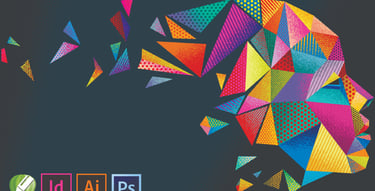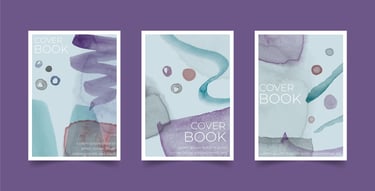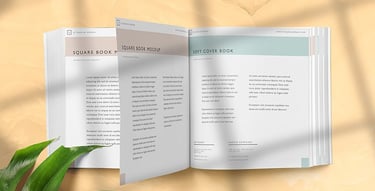With over 20 years of experience in publishing, creative writing, book design, and author consulting, I share proven strategies to help writers and self-published authors thrive. Whether you’re seeking expert writing tips, book design advice, or guidance through the self-publishing process, this blog offers practical tools, insider insights, and inspirational stories to help you create books that captivate readers and sell.
From behind-the-scenes book design techniques to writing discipline strategies and author branding tips, every article is crafted for indie authors, small publishers, and creative entrepreneurs who want to publish with purpose and stand out—both online and on the shelf.
Here, we unite the art of storytelling with the business of publishing—so your work is not only beautiful, but built for success.
Welcome to the intersection of creativity, craft, and publishing wisdom. Let’s build better books—together.


Welcome to
My Creative Blog
What Designers and Publishers Miss About Typography
Typography isn’t just about choosing a good-looking font—it’s about shaping how readers experience content. In this article, I explore the subtle but powerful ways typography influences readability, trust, and storytelling. I highlight common blind spots among designers and publishers—like ignoring leading, line length, and font pairing—and explain why thoughtful typographic choices can elevate a book from amateur to professional. This is a call to treat type not as decoration, but as design’s quiet engine.


A U G U S T 2 0 2 5


Positioning Yourself as an Author: Branding Tips Every Self-Published Writer Needs to Know
Author Branding, Part One: Why It Matters
Readers don’t just buy books — they buy into the person behind them. In today’s crowded self-publishing market, a clear brand is essential to stand out. Your brand is your promise to readers, built on three key questions: Who am I as a writer? (Genre, voice, themes). Who am I writing for? (Target audience). Why should readers care? (Your unique value). Answer these, and you’ll create the foundation for trust, loyalty, and lasting reader connections.
J U L Y 2 0 2 5


How To Get Your First 1,000 Readers as a Self-published Author
Author Branding, Part Two
Why Your First 1,000 Readers Matter. In the golden age of publishing, authors only had to focus on writing. Publishers handled printing, distribution, marketing, and branding—often turning writers into household names with eye-catching covers and clever publicity campaigns.
Today, as a self-published author, the landscape is different. The responsibility of finding readers, building a brand, and marketing your work falls on you. That’s why your first 1,000 readers are so important.
A U G U S T 2 0 2 5
Reliving the Golden Era of Kenyan Fiction: Revisiting the Pioneers of the 1970s
The 1970s marked a vibrant era in Kenyan literature, led by authors like Meja Mwangi, Sam Kahiga, Mwangi Ruheni, Charles Mangua, David Maillu, and Grace Ogot. These writers championed accessible, streetwise storytelling—writing for the ordinary Kenyan in a raw, humorous, and often provocative style. Their fiction explored urban life, crime, sex, struggle, and survival, blending entertainment with social realism. Bold and unfiltered, their work captured the mood of a restless generation and carved a lasting place in Kenya’s literary legacy.




Why Graphic Design Still Demands Mastery—Not Just Tools
True graphic design still demands creative, artistic skill. It's not about clicking through templates or dragging and dropping stock elements. It’s about mastering visual storytelling—using form, space, typography, color. It about the mastery of tools such as Adobe Illustrator, Photoshop, InDesign, Premiere Pro, and CorelDRAW in shaping meaningful, original visual communication. By emphasizing creativity, technical skill, and artistic intent, the piece defends graphic design as a disciplined craft.
J U L Y 2 0 2 5
J U N E 2 0 2 5
Book Design Is Not Graphic Design—Here’s the Difference
While graphic design and book design share common roots, they are fundamentally different disciplines. Graphic designers often excel at logos, social media visuals, and marketing assets, but may lack the specialized knowledge required to design a professional, print-ready book. Book design is a craft that demands deep understanding of typesetting, layout, and readability—things like kerning, hyphenation, ligatures, and print specifications.
A book designer doesn’t just make a book look good—they ensure it reads well, feels polished, and meets publishing platform requirements.


J U L Y 2 0 2 5


Book Cover Design: Why First Impression Matters
A professionally designed book cover is your most powerful marketing tool—whether in print, eBook, or digital promotion. In this post, I break down the importance of strong, genre-specific cover design in today’s saturated market, especially for indie authors. I explain my process for creating impactful print covers, high-resolution eBook formats, and eye-catching 3D mockups that elevate your book’s visibility and sales potential. Great covers don’t just attract—they convert. Let yours do the heavy lifting.
J U N E 2 0 2 5
What Is Book Interior Design?
And Why It Matters for Your Manuscript’s Success
Your book’s interior layout matters just as much as its cover. A well-designed page invites the reader in and keeps them turning. I offer custom, publication-ready interior design and typesetting services for authors and publishers who care about quality, readability, and professional presentation.
Whether you’re publishing fiction, nonfiction, poetry, cookbooks, memoirs, or business books, I create layouts that are tailored to your genre, audience, and publishing platform—be it KDP, IngramSpark, Blurb, or Kindle.


J U N E 2 0 2 5

Bio
I'm Okang’a Ooko—a novelist and senior book designer with deep roots in publishing, storytelling, and design. I specialize in helping publishers and agents deliver polished, compelling books that resonate with their markets. Whether you’re producing high-volume titles or championing a first-time author, my design solutions ensure your books look as powerful as the stories they tell, captivating readers, and reflecting professional quality from cover to final page. As an author, my novels explore history, politics, culture, music, love, and identity—told through emotionally rich, character-driven narratives that captures nostalgia, societal conflict, and the personal struggles of those facing change and disconnection. Read more »
Ready to transform your story into something unforgettable? Okang'a Ooko specializes in end-to-end creative solutions for authors, publishers, literary agents, and storytellers. Whether you're crafting your first novel, launching a brand, or building an author platform, he's here to guide you from concept to creation. Learn more »
With decades of experience in storytelling, publishing, and visual design expertise. Ooko helps you bring your book, brand, or message to life—beautifully, strategically.
Turn your vision into a lasting impression. Hire Okang'a Ooko »
Hire Okang'a Ooko
Connect With Me
© 2025. All rights reserved.
Terms and Conditions I Refund Policy I Privacy Policy
